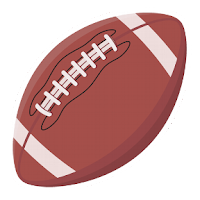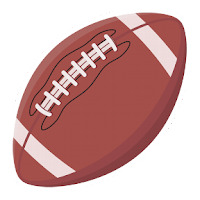S. Evan Townsend's Blog, page 38
September 22, 2019
The Huskies are 3-1
 The Cougars lost.
The Cougars lost.Yesterday the University of Washington Huskies beat the Brigham Young University Cougars in a dramatic 45-19 win. And to think I was worried.
The Huskies dominated from the start. Even without star running back Salvon Ahmed who didn't make the trip due to a leg injury. (He's "week-to-week" if he'll play or not.) Running back Sean McGrew stepped up and ran for 110 yards in the game, showing that the Huskies have depth at running. Quarterback Jacob Eason showed his skills in his first away game for the Huskies by throwing for 290 yards and three touchdowns. The Dawgs were so successful in reaching the end zone that they only punted once in the game and that was in the fourth quarter.
On the negative size, there was one interception by BYU and we did fumble the ball once. When the score was 45-19 with about five minutes left in the game, Husky coach Chris Petersen, as he likes to do, put in backup players. We didn't score after that.
The Huskies looked much better, making me think the California game might have been a fluke. (Or California is much better than anyone thought.) Eason continues to impress. And that we moved the ball for 187 yards running without Ahmed says a lot for the skill of the rest of the players.
Next week we play USC at home. The game is at 12:30 PM on Fox. I sure like these midday games better than 7:30 at night.
Elsewhere in the Pac-12
On Friday, USC beat #10 Utah. This should drop Utah in the AP poll a bit when it comes out.
California, ranked at #23, was the other team not playing in-conference. They beat Ol' Miss 28 to 20.
Oregon beat Stanford 21-6 yesterday. No surprise there. Oregon is ranked 16.
And in the biggest upset in the Pac-12, unranked and win-less UCLA beat the #19 WSU Cougars at home 67-63. Sounds like a basketball score. That should ding the Cougars in today's poll when it comes out.
The Houston Cougars lost, too, so all three college teams named "Cougars" lost.
The only undefeated team in the Pac-12 is California who are currently on top of the Pac-12 North. USC is on top of the Pac-12 South at 2-0 in conference, 3-1 overall.
And it wasn't in the Pac-12. Wasn't even in the FBS, but Idaho beat Eastern Washington, which is just amazing. And a lot of my relatives are happy about that.
The Polls
The AP Poll has come out and all the Pac-12 teams moved. Utah went from #10 to #19. Oregon, who beat Stanford, moved up three places to #13, making them the highest ranked Pac-12 team. California is now at #15 up from 23. Washington is at 17, up 5 places, and USC is back in the top 25 at #21. The Pac-12 has 5 teams in the top 25, which is pretty good. The SEC beats us at 6.
Washington State dropped off the poll after their loss to UCLA. And Arizona State dropped off after losing to Colorado.
Published on September 22, 2019 12:18
September 20, 2019
The Huskies Take on BYU
 Tomorrow the University of Washington Huskies travel to Provo, UT, to play the Brigham Young University Cougars.
Tomorrow the University of Washington Huskies travel to Provo, UT, to play the Brigham Young University Cougars.BYU is going to be a tough team to beat. They lost their first game to in-state rivals Utah (Utah is in the Pac-12). But then they won two tough overtime games against Tennessee on the road, and against USC at home (USC is also in the Pac-12).
The Huskies are coming off that big win against Hawaii. BYU is probably going to be the toughest team they'll face so far this year. And that includes California who beat them.
They Huskies are facing a tough crowd at BYU (those Mormons get loud) and will have to play a near-perfect game to win. We'll see if the defense can hold BYU and if quarterback Jacob Eason can hit his targets in an on-the-road game (where he's never played before).
The game is at 12:30 PM PDT on ABC. So everyone in the country can watch it if they have television.
Published on September 20, 2019 06:00
September 19, 2019
Coffee
 The cliché is that writers, such as myself, usually have an unhealthy relationship with coffee and specifically, with 1,3,7-trimethyl-1H-purine-2,6(3H,7H)-dione 3,7-dihydro-1,3,7-trimethyl-1H-purine-2,6-dione (also known as "caffeine"). The meme I've seen many times is that a writer's superpower is turning caffeine into words. Or a meme such as this one:
The cliché is that writers, such as myself, usually have an unhealthy relationship with coffee and specifically, with 1,3,7-trimethyl-1H-purine-2,6(3H,7H)-dione 3,7-dihydro-1,3,7-trimethyl-1H-purine-2,6-dione (also known as "caffeine"). The meme I've seen many times is that a writer's superpower is turning caffeine into words. Or a meme such as this one:
I'm not like that. I drink, usually, one triple mocha a day (in the summer, I don't even drink that because I don't like hot drinks in the heat). I remember years ago I was told I was allergic to caffeine (at the time I would consume 4-6 cans of Diet Coke a day). So I had to give it up. I was worried this would interfere with my creativity. Ten published books later, and I'm not worried any more. Except that I started drinking caffeine again, in reasonable quantities.
What is your relationship with coffee or caffeine? And do you think it helps you be creative? Let me know in the comments below.
Published on September 19, 2019 06:00
September 15, 2019
Huskies are 2-1
 Last night the University of Washington Huskies took on the University of Hawaii Rainbow Warriors. The Warriors were 2-0 against Pac-12 teams. Admittedly, one of those teams was Oregon State. But the other was Arizona. So, Hawaii was no easy team to beat.
Last night the University of Washington Huskies took on the University of Hawaii Rainbow Warriors. The Warriors were 2-0 against Pac-12 teams. Admittedly, one of those teams was Oregon State. But the other was Arizona. So, Hawaii was no easy team to beat.Unlike when they played California last week late at night, the Huskies won and won big. In the first quarter alone they scored 21 unanswered points. The Warriors didn't score until the second quarter, after the Huskies were already up over 30 points.
And, unlike last week, the defense showed up for this game. In the third quarter, the defense did allow the Warriors to score 13 points (they missed an extra point after a touchdown). But in the fourth quarter, the Warriors didn't score at all and the Huskies put up another 14 points. This, despite Husky coach Chris Petersen putting in backups in with about six minutes left in the game. No one scored after that. Sometimes I wish he'd just rack up points to impress the AP voters.
The final score was 52-20.
Next Week:
Next week the Huskies travel to Provo, UT to take on BYU. This isn't going to be an easy game. BYU beat USC this week. The Huskies are going to have to play hard as this will be their toughest opponent since California.
Elsewhere in the Pac-12
Now that we're 1/4th of the way through the regular season, we can start looking at the standings. The
 Pac-12 is not doing great against non-conference opponents. As I said, BYU beat USC yesterday. The good news is, WSU beat Houston Friday night (both teams called the "Cougars"). But Air Force upset Colorado, UCF beat Stanford, Oklahoma beat UCLA (who may be the worst team in the Pac-12). On the positive side, Arizona State beat Montana State, Oregon State beat Cal-Poly (an FCS team), Utah beat Idaho State (another FCS team), California beat University of North Texas, Arizona beat Texas Tech, and Oregon beat Montana.
Pac-12 is not doing great against non-conference opponents. As I said, BYU beat USC yesterday. The good news is, WSU beat Houston Friday night (both teams called the "Cougars"). But Air Force upset Colorado, UCF beat Stanford, Oklahoma beat UCLA (who may be the worst team in the Pac-12). On the positive side, Arizona State beat Montana State, Oregon State beat Cal-Poly (an FCS team), Utah beat Idaho State (another FCS team), California beat University of North Texas, Arizona beat Texas Tech, and Oregon beat Montana.California is on top of the Pac-12 North standings at 3-0 (1-0 in conference). Stanford and Washington are tied for last place at 0-1 in conference. Washington is 2-1 overall, Stanford is 10-2 overall.
In the Pac-12 South, the Trojans (USC) are on top at 1-0 in conference (2-1 over all). Everyone else is tied for last at 0-0 in conference. When conference play starts in earnest next week, we'll start sorting things out.
The Polls:
The Huskies came up one in the AP poll, to 22. Other Pac-12 teams in the top 25 are Arizona State, at 24 (they weren't in the top 25 last week), Washington State at 19 (up one), Oregon at 16 (down one despite winning their game), and Utah at 10, up one. USC fell off the top 25 after losing their game. They spent one week at 24.
UPDATE: I missed that California is now ranked, at #23.
Published on September 15, 2019 11:40
September 12, 2019
Outdoors
 Now that summer is over and it's getting more fall-like, I have a confession. I don't like the outdoors. My snappy comeback if someone asks why is "Outdoors is sunburn and allergies." Of course, after seven years of allergy shots, my allergies are better. But I still get sunburned very quick and very easily.
Now that summer is over and it's getting more fall-like, I have a confession. I don't like the outdoors. My snappy comeback if someone asks why is "Outdoors is sunburn and allergies." Of course, after seven years of allergy shots, my allergies are better. But I still get sunburned very quick and very easily.When I was in high school and college, one of the "treats" for the class would be to hold it outside. This usually happened in the spring. Everyone else in the class was saying "Yay!" and I was saying, "Oh, no." I would, at the very least, have to find some shady spot to stay out of direct sunlight. But sometimes there wouldn't be shade. And you'd have to sit on the ground (no thanks) and squint against the bright sunshine.
So why did I join the Army, which does most of its stuff outdoors. I don't know. Maybe I was crazy. We did this one "field exercise" in the Mojave Desert in August. The uniform was supposed to be sleeves rolled up to above the elbow. I kept mine down the entire time. I didn't want to get immediately sunburned. I was shocked I didn't get in trouble with the First Sergeant who was a massive racist jerk.
So, now it's fall. Cooler weather and no snow...yet. And people don't want to go outside for random reasons. Sounds good to me.
What are your feelings about being outside. Let me know in the comments below.
Published on September 12, 2019 06:00
September 8, 2019
Huskies are 1-1
 Maybe this is a rebuilding year.
Maybe this is a rebuilding year.Last night the University of Washington Huskies played the University of California at Berkeley Golden Bears. Going into the game, the Huskies were both favored and ranked.
But after about six minutes of play, the game was suspended for lightning in the area. The weather delay was an interminable two hours and 38 minutes. That meant that the game restarted at about 10:30 PM. It lasted until around 1:15 AM.
And the Huskies lost, 20 - 19. Not a huge lost but bad enough. The Husky defense had trouble stopping the Bears. The Husky offense had problems connecting and moving the ball. It didn't look like the same team that beat Eastern Washington last week. The defense could not make tackles.
Yes, everyone was tired. But so were the Bears. Probably the only thing the weather delay caused is about half the fans left, meaning there wasn't as much fan noise when the Bears had the ball. This probably helped them a bit.
But now I'm worried about the rest of the year. If we couldn't beat California how can we beat USC, Oregon, Utah, and Washington State whom we all play at home. Never mind winning on the road.
Maybe Coach Chris Petersen will have some magic between now and next week when we play Hawaii at home (4:30 PM on Pac-12 Network). We'll see.
Because the game ran so late I got to bed at about 1:30 AM. I slept until almost 10:30 AM. Even house-rattling thunder at about 5:00 AM from our own lightning storm couldn't keep me awake. Which really messed up my day which is why I'm posting this at almost 5:00 PM rather than this morning.
At least the Seahawks won...barely.
The Polls:
In the AP top 25 Football poll, Washington dropped nine spots to 23. This puts them barely ahead of USC at 24. Washington State is at 20, Oregon moved up one to 15, and Utah is still the highest ranked Pac-12 team at #11.
Published on September 08, 2019 16:54
September 5, 2019
Words
 I have a theory about words. And that is, the shorter they are, the more common they are. If they are one syllable, they are probably quite common. The more syllables they have, the less common they are. This is also why swear words tend to be one syllable.
I have a theory about words. And that is, the shorter they are, the more common they are. If they are one syllable, they are probably quite common. The more syllables they have, the less common they are. This is also why swear words tend to be one syllable.Think about it. Almost everything you touch every day is a one-syllable word. Some may be contractions of longer words or phrases (the "el" for "elevated train, for example).
Look at the car. It, in the space of about 50 years went from "horseless carriage" to "automobile" to "auto" to "car."
The telephone became "phone." the smart phone also became "phone." Applications became "apps" but I think that was more a marketing thing.
As computers become more common, they too will probably be shortened. I've already heard computers called "puter." Will in fifty years they be called "pute" or "comp"?
Can you think of something you touch everyday that was two, three, or more syllables? Let me know in the comments below.
Published on September 05, 2019 06:00
September 3, 2019
AP Top 25, Week 2
 For some reason the AP is calling their poll released today "Week 2." They were calling the preseason poll "Week 1" earlier, and I thought that was a mistake. Or maybe it was supposed to be Week 1 but nothing changed (no ranked teams played).
For some reason the AP is calling their poll released today "Week 2." They were calling the preseason poll "Week 1" earlier, and I thought that was a mistake. Or maybe it was supposed to be Week 1 but nothing changed (no ranked teams played).So, after winning their game against Eastern Washington and looking great, the University of Washington Huskies...drop one rank to #14. They essentially traded places with Utah who moved up to #13. Utah beat BYU.
Stanford moved from 25 to 23 and WSU went from 23 to 22. All those teams won their games.
But then the University of Oregon Ducks lost to Auburn. This dropped them from 11 to 16. Auburn went from 16 to 10.
From now on, the AP poll comes out on Sunday morning (my time) so I won't have to make a separate post for it. I'm not sure when the CFP rankings start coming out. Usually around week 8 if I remember correctly.
Published on September 03, 2019 11:59
September 2, 2019
Huskies Win Their First Game
 Yesterday (Sunday), I forgot to write this blog post, so I'm doing it today.
Yesterday (Sunday), I forgot to write this blog post, so I'm doing it today.Saturday the University of Washington Huskies played the Eastern Washington University (EWU) Eagles in their first game of the 2019 season. I wasn't too worried about this game because EWU is an FCS team, albeit one of the best FCS teams (they were beaten in the championship game last year by North Dakota State). That, and after four years of Jake Browning at quarterback, we were breaking in a new QB in Jacob Eason. His skills were an unknown.
I needn't worry. Eason proved to be a very capable quarterback and the receiving squad also showed its skills, especially Aaron Fuller who made two spectacular catches in the end zone for touchdowns. At one time the Huskies had the ball at the exact center of the field and Eason threw a long bomb that was caught by Andre Baccellia and ran in for a TD. It reminded me of the Jake Browning-John Ross era.
In the end, the second best team in the FCS couldn't keep up with the Huskies' offense. Toward the end of the game, as he often does when the score is lopsided, Coach Chris Petersen put in second stringers. Even then they managed to get a safety. The final score was 47-14.
Next week we play California at home in the Huskies' first conference game. Having seen Eason's abilities, I'm only slightly worried about that game, too (although maybe I should worry more; last year California beat us). The game is at 7:30 PM on FS1.
Elsewhere in the Pac-12
The big hype this year is around the #11 Oregon Ducks (whom I hate). They played #16 Auburn in Texas and nearly won. They led most of the game but ended up losing. I know it would have been better for the Pac-12 if they won, but I can't help but be happy that they lost.
Polls
The AP poll doesn't come out until tomorrow sometime. I'll likely have a post when it does. I'm not counting on the Huskies moving much (they are at #13). But Oregon should drop a bit.
Published on September 02, 2019 05:12
August 29, 2019
College Football, A Primer: A Notional Game
 We're almost to the end of our college football primer. See here, here, here, here, here, and here for earlier posts.
We're almost to the end of our college football primer. See here, here, here, here, here, and here for earlier posts.Today, we'll talk about a notional game.
A Notional Partial Game
The home team, the Walla Walla Wolves (a fictional team), won the toss and elected to defer. So they will kick off the ball to start the game. The kicker kicks the ball and it goes into the end zone and out the back of the end zone. This is a "touch back." Play starts on the 25 yard line. It's 1st and 10. The Pasco Ponies (another fictional team) lines up behind the line of scrimmage. The center snaps the ball to the quarterback, he drops back and throws a long "bomb" to a wide receiver down the field. But the receiver can't catch the ball. It's 2nd and ten. The Ponies line up again. This time the quarterback hands it off to a running back who gets seven yards past the line of scrimmage before he's tackled. It's 3rd and 3. The Ponies again line up. And again, the running back gets the ball. He runs four yards past the scrimmage line before he's brought down. It's now 1st and 10 on the 34 yard line.
The Ponies get ready to play again, lining up behind the line of scrimmage. But before they get the play off, an official throws a flag. Because of crowd noise, the Ponies were "off sides." They get a five yard penalty. Now it's 1st and 15 at the 29 yard line. The ball is snapped again and the quarterback hands it to a running back. But he's tackled at the 28 yard line. It's now 2nd and 16. The next play the Ponies try a pass, but the defensive players make it to the quarterback and "sack" him on the 25 yard line. It's now 3rd and 19. Wanting to be conservative and not risk an interception, the Ponies run the ball again and the running back gets a good eleven yards before he's tackled. But it's now 4th and 8 on the 34. So the Ponies punt.
The ball goes to the 5 yard line on the opposite side of the field and is "downed" by a Ponies player. That means he stops it from going farther. He will only do this if he's worried it'll go into the end zone and cause a "touch back."
So the Wolves are on their own 5 yard line and it's 1st and 10. The first play they try a long pass. And it's caught on the 15 yard line and the wide receiver gets four more yards before he's tackled. It's 1st and 10 again (they got their 10 yards and more on the first play). This was also considered a risky play because it's close to the Wolves' end zone and if it were intercepted it would be easy for the defense to get a touchdown. But, instead, it's 1st and 10 on the 19 yard line.
The Wolves run another play, this time they "run the ball" and the running back gets tackled three yards past the line of scrimmage. It's 2nd and 7 on the 22 yard line. Again the Wolves throw the ball and the receiver catches it and runs toward the end zone. He's forced out of bounds at the 45 yard line (the Wolves' 45 yard line, the one between the 50 yard line and their end zone, which remember, is behind them). It's 1st and 10 again.
Again the Wolves run the ball, and the running back makes it to the 45 yard line on the other side of the 50 yard line. This is called "being in Ponies territory." It's 1st and 10 again. Another run but this time there's a flag. A Wolves player is called for holding. The player protests but it does no good and the Wolves are knocked back 10 yards to the 45 yard line on their side of the 50 yard line. It's 1st and 20 now.
The Wolves pass the ball and the wide receiver catches it. He's tackled at the 46 on the Ponies side of the 50. So it's 2nd and 11. Again, the Wolves throw the ball, this time the receiver is "wide open" and he catches the ball and runs to the ten yard line before he's brought down. It's 1st and goal at the 10. Two more plays and the Wolves get the ball into the end zone and score six points. Their point after touchdown (PAT) attempt is good. The score is 7-0.
Conclusion
This should be enough information to get you started watching college football. Once you start watching, you'll realize the power and grace of it. Pick a team to root for and it's a lot more fun. Or frustrating (I wouldn't pick Oregon State). And college football is so much more fun to watch than baseball, any day. I can't wait for the season to begin this weekend. (Technically, the season began on the 24th with two FBS games: Florida vs. Miami of Florida* and Arizona vs. Hawaii. That was called "week zero." There are also games tonight.)
The University of Washington Huskies of the Pac 12 conference, the team I follow, play at noon PDT on Saturday against Eastern Washington. Eastern isn't going to be a push-over even if they are an FCS team. They were almost the FCS champions last year. It will be shown on the Pac-12 Network.
*There's a Miami of Ohio so you have to distinguish between the two.
Published on August 29, 2019 06:00



